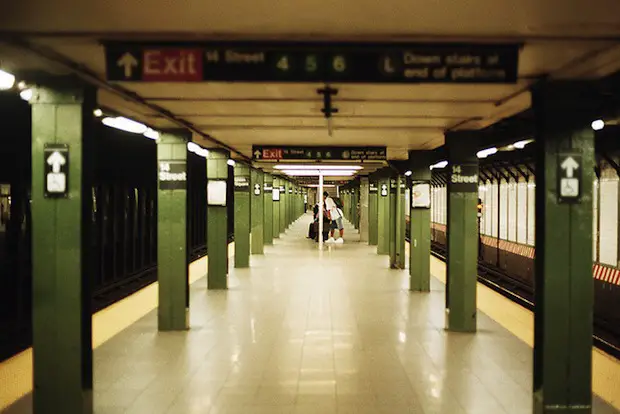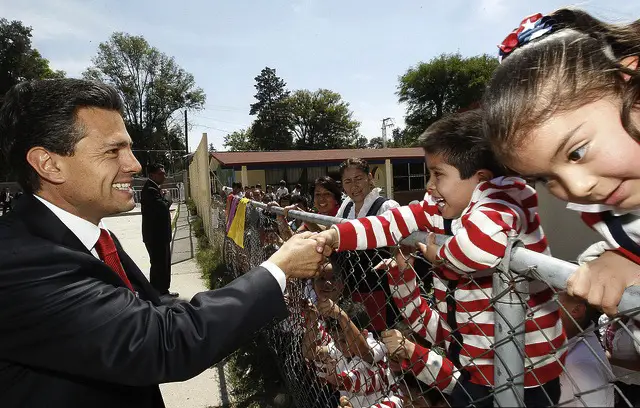WikiCity: How Tactical Urbanism is Improving Mexico City for Pedestrians and Cyclists
Across the globe, citizens are starting to take control of their cities. Whether its pedestrian crossings in Bogota or seating on LA sidewalks, citizens are increasingly likely to get out on their streets and implement the urban infrastructure their governments haven’t provided. I recently got the chance to talk with Alejandro Morales and Jimena Veloz about their work with Camina, Haz Ciudad – a Mexico City collective aiming to improve facilities for pedestrians and cyclists:
Joe Peach: Google translate tells me that Camina, Haz Ciudad means ‘Walk Your City’. Can you tell me a bit more about how this movement began?
Alejandro Morales: A more accurate translation would be: ‘walk, (re)make your city”. I see this as a statement about how simple it is to start improving our streets and neighborhoods. All you have to do is walk more and then you can go one step further by painting infrastructure that the government doesn’t provide.
Jimena Veloz: Camina, Haz Ciudad started as a project to recover space for pedestrians. It was inspired by a modern development that happened here in Mexico City in an area called El Puente de los Poetas. Amazingly, there was no pedestrian infrastructure at all there, the whole place seemed to be designed for cars. A group of citizens decided that couldn’t be, so they painted a sidewalk in an area where lots of people walked but had no safety. But the sidewalk was erased, and the people who painted it were really mad. This anger seemed to inspire a sense of purpose within the group, and we just started painting more things. The collective is completely citizen orientated and we fund it with our own money. The idea is to make people aware pedestrians exist.
JP: Painting the infrastructure you think your city needs is a fantastic idea, but establishing the permanence of such an intervention strikes me as a bigger challenge. When the sidewalk was painted, did you really expect it to last?
JV: The sidewalk was our very first project. I wasn’t in the collective at that time, but they did seem to think it would last. And they were right. The sidewalk was respected by cars and wasn’t removed by the authorities, instead a local neighbourhood association erased it. The area where we painted the sidewalk was kind of conservative. This neighbourhood association said they wanted the area to be better, but they still took away our sidewalk. There’s not much you can do to improve your local area when you don’t even have parks or sidewalks, or a store nearby.

AM: The permanence of those interventions is as important as the lessons learned. A lot of people got involved in the process, people of different ages and professional backgrounds. These type of interventions are ephemeral but the sense of empowerment, the process of remaking our city with creativity and passion is also important. It’s worth doing, even if it may not have the permanence of other infrastructure developments.
JP: One of your most successful interventions is a 5km bike lane that ends at Congress in Mexico City. What kind of expectations did you have for the lifespan of the bike lane?
JV: Initially, we were supporting a very interesting proposal at Congress which proposed that 5% of the transport budget should be allocated to cycling and walking infrastructure. With our first painted bike lane we were trying to make a political point that this proposal should pass. We didn’t have any expectation of how long it would last.
JP: But the bike lane is still in place. Why has this project lasted when some of the others have been erased?
AM: With the sidewalk – the very first project – local people were unsure because they didn’t know who did it. But now the collective is growing and, I hate to use the word powerful, but now we’re getting quite noisy and people are beginning to realise that we are quite a large group of people who can make real change.
JV: Our list of supporters is getting pretty long, but the core group, the ones who make the plans and do all the work is still only around ten people.
AM: We’re a compact group!
JV: But we’re very organised!
AM: It’s all very spontaneous. We were in the middle of a meeting when we heard that the first bike lane had been erased and we were so angry. Within 15 minutes we decided to make a video and start fundraising on a crowdsourcing site for our second attempt. The collective is very spontaneous, and we’ve used social media to encourage support from other people.
JV: That meeting was really fun because we were in the same cafe we always get together in and we just said ‘let’s do it!’. We started looking at the numbers, like how much paint we would need, how much it would all cost. After about an hour we had it all planned. In the end we didn’t even need much paint, only about 30 litres, and we had some left over because people brought their own!

JP: How have you used social media to spread the message and build support for your work?
AM: The important thing is the message itself. This message was simple, engaging, and the key to our approach with social media.
JV: We were doing this really big thing and a lot of other people got interested in the project. I think it was because it was engaging to see citizens doing what the government need to do. Everyone has a feeling that they should be doing something to make their cities better, but here’s some people who are actually doing it.
AM: The worst part of it all is to see the government doing something to erase it. You can see people doing good, improving their cities, but then our the government comes along to erase it. And people ask what’s wrong with this government! It’s crazy – using resources to erase something well made and beneficial. Even though the government didn’t ask for it, it was useful.
JV: In Mexico, the government is not used to responding to citizens, and people are finally waking up to this and doing things themselves. The government isn’t scared but they don’t know what to do. They have no idea how to respond. What we do is kind of illegal.. we know that, but the bigger purpose is to open up a discussion about what our cities need. The government should engage in that discussion, tell citizens what is possible and what is not. Let us know what we can actually do as citizens to better our streets.
JP: Has Mexico City changed since you started these interventions?
AM: I don’t feel it has started to change. The city is so big, but that’s the important thing. As a collective, we know we can’t physically change the whole city, but we are doing small interventions to encourage change to happen more quickly. We have limitations, and that’s why it is so important to work with the government and make things better.
JV: Mexico City is so big and our work is small. A pedestrian crossing takes us a whole day, and we don’t have enough time for such a large city.
JP: Can you tell me more about how you fund your work?
JV: At first we gathered money from whoever had it available. but we’re young and lots of us are students, so it was hard. We started using crowdsourcing because the wikilane was such a big project, and nobody had that kind of money available. But now we’re starting to explore other forms of funding. We’re getting a grant from the Institute for Transport and Development Policy, but of course, it comes with more conditions than crowdfunding.
JP: Are you disappointed with how the government has responded to your work?
AM: Of course we are. I’m more disappointed because they said ‘send a letter to our offices so we can handle your request’ and they answered simply by saying ‘we can’t do anything. It’s not our job’. That’s the most disappointing thing.
JV: But we’ve had governmental change. I hope the new government can start well by responding. At the moment, the doors aren’t open. They talk about what they do for pedestrians, but when it comes to a conversation with citizens, they are not open for discussion.
AM: We have a battle to fight here. We are going to do more. I still have hope that we can officialise that bike lane.


